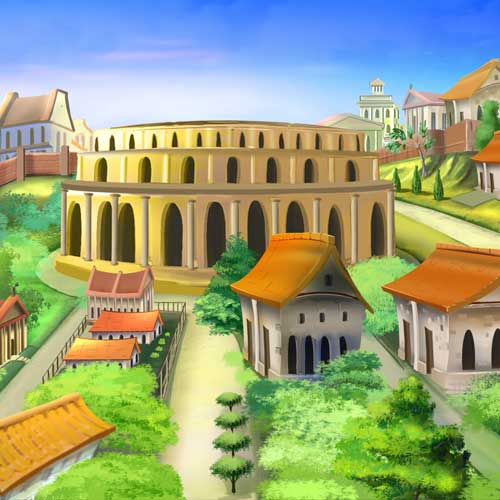We use them everyday, and take them for granted until they break. We shell out thousands of dollars for new ones, and will pay hundreds in the blink of an eye to get them fixed. The toilets in our homes, workplaces, and public places often go underappreciated, and end up viewed as an unpleasant thing to use, clean, and care for. In actuality, having a flushable toilet is a comfort that over 2.5 billion people on Earth don’t have the fortune of being able to use. It truly is a sign of an advanced society and developed infrastructure that first world countries enjoy, and also take for granted.
The origin of the toilet, and who invented it, isn’t definitively recorded in history, but there are quite a few different civilizations and figures that deserve some credit for bringing the toilet into homes and buildings around the world.
Early Toilets in History
The first remnants of toilets can be traced back to 3,000 B.C. in Neolithic settlements in Scotland. These primitive stone huts featured drains that were built connected to recesses in the walls, travelling through the walls and emptying out into the space behind the huts. While archaeological experts make an assumption that these features found in the huts were used as toilets, it remains a mystery.

Jumping ahead 1300 years to 1,700 B.C, the Palace of Knossos, built by early Greeks, featured a number of large pans made from clay that were connected to a water supply with terra cotta pipes. Again, historians and archaeologists have drawn conclusions that this system was used for bathroom purposes, but a definitive answer is still unknown.
When in Rome, Toilets Were a Social Event

As the Roman civilization’s engineering feats continued to progress the way that humans lived in cities, one of their greatest feats was the ability to move water through the use of aqueducts. These “water highways” helped to move fresh water throughout the ancient cities of the Roman Empire, and also acted as sewers to move wastewater out of the cities and back into the rivers.
Ancient Rome is famous for its massive public bathhouses, some of which were large enough for 1,600 people to use as once. By 315 A.D., there were over 144 public toilets in Rome alone. These rooms had walls lined with stone benches with opening cut out where Romans would gather to chat and gossip while doing their business.
Don’t Walk Under the Castle Garderobe
As medieval castles sprung up throughout Europe, an interesting toilet design became quite popular in their construction. Called a garderobe, this toilet was a small room built into a tower that protruded out from the castle wall. There would be a stone bench that had a hole in it that opened to the outside, and castle dwellers would relieve themselves through this hole, that then sent their waste plummeting to the ground below. Luckily, or unluckily, for those who lived outside the castle, these garderobes were usually built over a moat or river, so there was little risk of having waste land on their heads…however, there was a strong chance of said waste polluting the water source that it was being emptied into.
Flushable Toilets Invented in England
Most historians credit Sir John Harrington, a poet and godson of Queen Elizabeth, as the inventor of the flushable toilet, called the Ajax. Legend has it that Harrington had a habit of including “toilet humor” in his writing, and was exiled by the Queen for 8 years. While he was exiled, Sir John constructed his own home, and in it, developed a toilet with a raised cistern that held water to be flushed into the toilet bowl, pulling the waste out into the drains. When Queen Elizabeth finally forgave him and came to visit his newly built home, she tried his toilet, the Ajax, and enjoyed it so much that she requested he build one for her as well in her palace at Richmond!
Unfortunately for Sir John Harrington, his invention went unnoticed for over 200 years, until an English watchmaker named Alexander Cummings developed his own version of Harrington’s toilet that introduced a S-shaped pipe under the toilet bowl. In 1775, he received a patent for his toilet.
Thomas Crapper Leaves His Mark on Toilet Lore
In the 1880’s, flushable toilets had been mainstream for quite some time. In England, it wasn’t uncommon for over 100 people to share the same toilet, making sewage management quite a difficult feat. The English royalty had a much more pleasant experience as they introduced toilets to their residences. A London plumber by the name of Thomas Crapper was hired by Prince Edward to construct bathrooms in a number of palaces and government buildings. While he did invent a number of toilet-related improvements, he became synonymous with toilets because of his company name, “T. Crapper-Chelsea” being printed on the metal cisterns above each toilet.
Toilet Innovation Slows in the 20th Century
The basic premise of the modern toilet has not changed much from the Crapper toilets of the 1880s, and even from the original design from Sir John Harrington’s Ajax. As more homeowners began to install toilets in their homes, designers found a way to combine the cistern into the back of the toilet, eliminating the need for an elevated water box. In 1994, the United States congress passed the Energy Policy Act that created a regulation on how much water toilets could flush, setting the maximum amount of water per flush at 1.6 gallons. This reduced the amount of water per flush from 7 gallons to 1.6, forcing companies to improve the design of their toilets once more to ensure that waste and toilet paper would easily flush and not clog.

